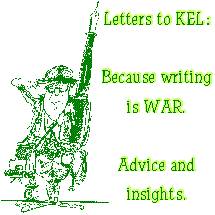Michelle L. Levigne's Blog, page 156
January 5, 2015
Off the Bookshelf: HOW LOVELY ARE THY BRANCHES, by Diane Duane
 Okay, let me start out by saying Diane Duane does not write fast enough!
Okay, let me start out by saying Diane Duane does not write fast enough!I love her Young Wizards series. No, it's not the American version of Hogwarts -- this is a learn-on-the-job kind of wizardry. It started with a young girl hiding from bullies by ducking into the library, and this book kind of nudged her to take it off the shelf. It was titled, "So You Want to be A Wizard."
The rest is history.
I'm not sure how I found her online bookstore, but every once in a while offers come through for revised editions of the previous books, and this year, a great Christmas present -- a short Christmas story in the Young Wizards series.
What do you do with a wizard from another universe who, quite frankly, looks like a Christmas tree? Well, in this story, you invite him to Earth for Christmas and decorate him!
Take my word for it, it's not as silly as it sounds, and there's a lot of profound thought as well as fun, mischief, humor, and a chance to meet up with old friends in this story. I loved it. And another great Christmas present was to hear that there will be a new Young Wizards book coming out. But of course, not soon enough!
Published on January 05, 2015 02:00
January 3, 2015
SPOTLIGHT: The Sunsinger Chronicles #1: SUNSINGER
 For the next few ... well, months, possibly, Spotlight Saturday will feature my Commonwealth Universe books. Science fiction set in a far-off universe, following the descent of a galactic civilization into barbarism, then the long climb back to the stars.
For the next few ... well, months, possibly, Spotlight Saturday will feature my Commonwealth Universe books. Science fiction set in a far-off universe, following the descent of a galactic civilization into barbarism, then the long climb back to the stars.First up: The Sunsinger Chronicles.
A 10-book series about a boy growing up on board a small Free Trader ship.
Most of my Commonwealth Universe books are published by Writers Exchange of Australia: www.Writers-Exchange.com.

The first book, appropriately titled SUNSINGER, introduces us to Bain Kern, an orphan boy growing up on a backwater colony world. He has big dreams and hopes, but his chances of going to the right schools and learning to be a Spacer are very small ... until the alien Mashrami invade the Commonwealth and Bain's world lies right in the path of the invasion. When the Free Trader ship Sunsinger lands on the planet, the authorities ask Captain Lin Fieran to help in the evacuation. She takes a shipload of orphans, and Bain is among them ... and the rest is history!
Published on January 03, 2015 02:00
January 1, 2015
Letters to Kel: PROMISES TO KEEP -- List of planned titles for 2015
 2015 WRITING GOALS
2015 WRITING GOALSHere are the titles I MUST write in 2015, because I have contracts, as well as WANT TO write, and promises I have made to my publishers. And readers.
Hold me to this, gang!
Tabor Heights titles: TRUCK STOP ANGEL and THE TEDDY BEAR DANCER
Quarry Hall titles: ANNE'S OGRE and NIKKI'S SHADOWS
Neighborlee, Ohio title: HERO BLUES
Commonwealth Universe titles: KHYBORS, NOVA VENDETTA #1: The Injustice, THE ORDER #2: Healer
Plus ... I plan to resume writing Faxinor Chronicles novels, starting with SWORD OF FAXINOR.
Also -- and this is proof what I've mentioned before, never throw out anything -- I will be launching a new series with Writers Exchange called WILDVINE. The series starts with a group of people from another universe/dimension who come to Earth as exiles, fleeing civil war and injustice on their world. As the generations go by, they find a way to return home, but is it home anymore? Check back here for updates on the release date for the first title: JA'HANNA.
Published on January 01, 2015 02:00
December 29, 2014
Off the Bookshelf: The Christmas Traditions Series: AN APPLE FOR CHRISTMAS and CHRISTMAS LESSONS
 Love at Christmas, with touches of humor and hurt, growth, historical settings, and charm.
Love at Christmas, with touches of humor and hurt, growth, historical settings, and charm.There are more short stories in this series than the two I read, which I got from Amazon. Both were charming, quick reads, in different locations and time periods, with different challenges for the heroines and the heroes to overcome, but both were set in schools. I don't know enough about the series to know if all the stories were set in schools in different periods of history, but it might just be worth buying the rest of the stories to find out!
CHRISTMAS LESSONS intrigued me because the heroine is physically challenged -- not going to tell you how -- and part of her problem is proving she is just as able as everyone around her. She and the hero have a past. Will love help them get over their differences and old pain? AN APPLE FOR CHRISTMAS is set in Vermont and deals largely with apple farming, an apple farmer, and education for females.
Charming. I wasn't able to read very many Christmas stories in time for Christmas, but who says you have to limit reading stories set at Christmas to just Christmas time? If you don't have a lot of time for reading, look for these. Small bites can be just as satisfying as full-length stories.
Published on December 29, 2014 02:00
December 25, 2014
Letters to Kel: TRANSFORMATIONS -- Turning a Screenplay into a Novel
 I'm pleased to report that my first draft of CHARLI, Quarry Hall Book #6, due out in 2015 from Desert Breeze Publishing, is FINALLY finished.
I'm pleased to report that my first draft of CHARLI, Quarry Hall Book #6, due out in 2015 from Desert Breeze Publishing, is FINALLY finished.Well, it was finished two weeks before this blog is due to appear, but I'm writing it now just a few days after I finished the 1st draft, and still basking in the glow, the feeling of "Aaaaaaaahhhhh, DONE!"
The nice thing about transitioning a screenplay into a novel is that a lot of the plotting and dialogue is already written for you. The hard part -- sometimes the painful or uncomfortable part -- is realizing that this screenplay you were so proud of 10 years ago ... isn't really that great. There are some dumb lines, or the action just doesn't fit what you need to have happen, or you have to use the mouse to mark big chunks of screenplay and then hit the "delete" button. And then there are the "technology" issues. When I wrote the screenplay, cell phones weren't all that prevalent. I had to make some changes in the heroine communicating with her mother during times of crisis, and had to change some people's lines around, or have one person kick the tar out of the bad guy when someone else did it in the screenplay. Confused? Think of it as just changing costumes and props around.
The original screenplay was written for a competition 10-15 years ago, and was called WALKING THE WOLF TRAIL. Charli Carson and her mother, Dr. Rachel Carson are still there, and pretty much the same. The children who come to stay with them and hide in the forest from evil men threatening their parents, Jack and Emily, are the same. The wolf cub, Diss, who Charli rescues from nasty poachers who killed the rest of his litter, is still the same. The federal agent who betrays them is still the same. However, to make it a Quarry Hall story, I had to insert at least one of the daughters of Quarry Hall, and give her a really good reason to go to Dr. Carson's hidden research lab in the forest. And then more good reasons to get involved in Charli's problems, and put herself in danger when things start getting tense.
This is called motivation -- and it isn't just for theater students!
Those who know the Quarry Hall series know that Joan, the main character, has great motivation to go to Dr. Carson, who is doing experiments with plants, trying to recreate medicinal plants that have been lost thanks to depredations in the Rainforest. I'll leave it at that.
I'm very pleased with the first draft. It won't take much revising and polishing to make it ready to turn in to my publisher -- thank goodness, because I have a due date of January 1! By the time you're reading this, I'll be doing a third revision, or maybe even polishing. There are some consistency issues to fix, and a few logic holes to plug ... but thank goodness they're small. I was still discovering things about the characters and the story as I was writing -- which is what always makes writing fun.
Check out Desert Breeze Publishing in May of 2015, when CHARLI is due to be released. I promise you'll be pleased with what I ended up with, changing this screenplay into a novel.
Like I've said before, writers never throw out anything.
Published on December 25, 2014 02:00
December 22, 2014
Off the Bookshelf: TITANIUM by Linda Palmer
 Today's Spotlight book hasn't officially hit the bookshelves yet.
Today's Spotlight book hasn't officially hit the bookshelves yet.TITANIUM, by fellow Uncial Press author Linda Palmer, is due to be released in February.
You can pre-order Uncial Press books from Amazon and Kobo and Nook and iBooks -- I believe -- so it might be a good idea to put this on your wish list and ask for it before it's officially out.
Yeah, it's that good.

Part suspense, part romance, part sociological treatise on fandom and the wounded warriors phenomenon ... there's a lot of book packed into its mere 180 pages.
Riley is our heroine, a college student working a frustrating job for the proverbial boss from heck. Some jerk customers at the taco stand target her -- jerks dressed up as zombies.
Fortunately for her, Zander, a vet who lost a leg, has a sixth sense for danger. He notices the zombies watching Riley and leaps into action. Despite his better judgment, their lives are soon intertwined. Which is a good thing when Riley's estranged father enrages some lunatic fringe fans of his cult classic comic book, "Titanium," and they -- yep, you guessed it, the zombies -- strike out at Riley to ... well, you're just gonna have to read the book to find out what's going on and why.
Published on December 22, 2014 02:00
December 20, 2014
Spotlight Saturday: ONE SMALL CHILD and CORBAN, Free Short Reads
 Today's Spotlight is on two free short reads -- consider them a Christmas gift!
Today's Spotlight is on two free short reads -- consider them a Christmas gift!ONE SMALL CHILD
From Desert Breeze Publishing.
Max and Tony are starting to prepare for their wedding in the spring. Plus, they're busy with preparations for Christmas, and for the Christmas play, and everything tied into the season. What Max thinks is her brother, Jeremy, going overboard with the sound effects for the Nativity scene turns out to be a baby left on the front steps of Homespun Theater.

The note claims Max is the father of the baby, and it's about time "he" takes responsibility. Max knows SHE most certainly is not the father -- but she knows who is. Last spring, someone tried to steal her identity and destroy her writing career, and the repercussions are still being felt.
As Max and Tony try to figure out where, and who, the mother is, they are faced with more questions and a lot of soul searching.
One small child can make a big difference in a short amount of time.
Check out Desert Breeze Publishing for a lot more free short reads. You won't be disappointed!
The second free short read is published in Kindle format and is free from now until Christmas Eve.
 CORBAN
CORBANTake the Incarnation and set it on a world-ship.
CORBAN is actually the first 4 chapters of an SF allegory novel I have written called TABAIRNA, which is waiting for consideration with a publisher right now. Cross your fingers!
You can get it now from Amazon Kindle.
Published on December 20, 2014 02:00
December 18, 2014
Letters to Kel: ARE YOU READY?
 ALWAYS be ready when inspiration strikes.
ALWAYS be ready when inspiration strikes.Mostly because it strikes when you are least able to drop everything and take notes.
Big bad confession time: I get most of my great ideas ... in CHURCH! Yeah, I sit there in my adult Bible fellowship group, industriously taking notes ... but not on my teacher's lesson. (Sorry, George!)
I don't know why it happens, but it just does. For instance, I got my idea for today's blog just before class started. If I could figure out how to turn on the spigot, and control it, I would be in great shape. I wouldn't sit there sometimes staring at my computer screen, knowing I want to get to a certain place in the story outline, but not certain exactly what the next step is to get there.
So, you have to be ready to write down those ideas when they strike. I keep a notebook in my purse. I have a notepad sitting on my desk. My iPad sits on the table next to my bed -- very convenient for ideas that strike in the middle of the night, because I don't have to turn a light on, and it's a whole heck of a lot more legible than the notes I used to try to write in the dark.
Use what works best for you. Notepad, iPad, voice recorder, whatever.
Don't depend on yourself to remember when you finally get a chance to write down that flash of inspiration that came when you happened to overhear a bit of conversation that struck a memory or filled in that gap in the story you're working on, or you see a picture that reminds you of your character, and you realize that your heroine has a cousin who is just perfect to say that silly line that gets things moving. You know what I mean, that "Ah ha!" moment when you feel like you're "remembering" something, but you're really just filling in the blank spots.
Yeah, you get great ideas when you're driving somewhere, or doing the laundry or cleaning the bathroom or working out or changing the baby's diapers or cooking dinner ... and you just can't drop everything to write down the idea. Well, DROP IT as soon as you can. Don't tell yourself you'll remember an hour from now, or five hours from now. Your head gets too jammed full during the day and things get mixed up, and you "download" in your sleep all the things you crammed into your head during the day -- that's where dreams come from, or at least that's the theory. Let me ask you: How many times did you wake up with this great dream so vivid in your head, but by the time you got up and found some paper to write it down ... it faded away?
BE READY. Don't leave anything to chance. When inspiration sneaks up on you and whispers in your ear ... be ready to snare it before it runs away!
Published on December 18, 2014 02:00
December 15, 2014
Off the Bookshelf: MANIPULATIONS, Shifters Book 1 by Audie Thacker
 If you haven't picked up on it yet, I belong to ACFW -- American Christian Fiction Writers. I also belong to the Speculative group -- those of us who write outside the box of what you'd expect from faith-focused writers. Of course, we count C.S. Lewis and J.R.R. Tolkein among our forefathers, so ...
If you haven't picked up on it yet, I belong to ACFW -- American Christian Fiction Writers. I also belong to the Speculative group -- those of us who write outside the box of what you'd expect from faith-focused writers. Of course, we count C.S. Lewis and J.R.R. Tolkein among our forefathers, so ... On the Speculative group, Audie Thacker announced his new book was free, and it had shapeshifters in it -- and you know I've got shapeshifters (the Hoveni) in my Commonwealth Universe --so yeah, I was interested!
This is an intricately wrought world, with clashing empires and elves and magic and evil schemes and revenge and long-range plots and feisty princesses and warriors with wounded souls and ... whew!
Make sure you have big chunks of time when you sit down to read, because this is one of those books where you want to take it in big gulps, not little nibbles. There are a lot of details and characters to keep track of -- gee, it feels like a real world. An impressive offering, and because it's Book 1, there's a lot more to come. If you like "this kind of stuff," then check it out! I got my copy from Amazon.
Published on December 15, 2014 02:00
December 13, 2014
In the Spotlight: SEEKERS CHRISTMAS COLLECTION
 In the mood for some short, sweet Christmas romances?
In the mood for some short, sweet Christmas romances?Not sure if you're in the mood for historical or contemporary?
Why not both?
Put a little “hope” in your Christmas stocking this year …Hope does not disappoint — Romans 5:5 … and neither do these award-winning authors from the popular Seekers blog, offering tender love stories of hope from yesterday and today in two separate holiday collections— historical and contemporary.

Mary Connealy,Audra HardersMyra JohnsonSandra LeesmithJulie LessmanRuth Logan HerneTina RadcliffeMissy Tippens —
E-Book on Sale November 10th!

Published on December 13, 2014 02:00



